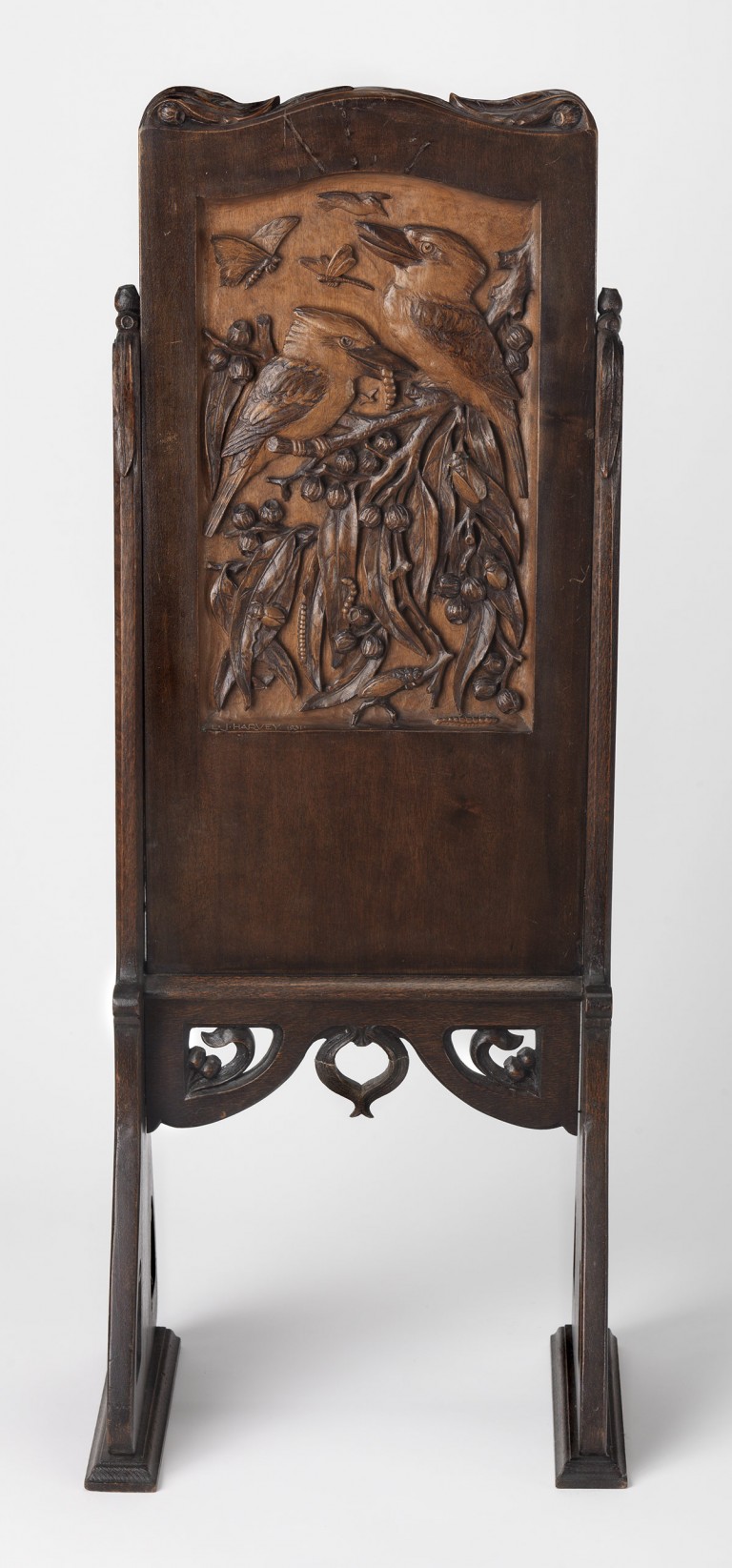We acknowledge the Traditional Owners of the land on which the Queensland Art Gallery | Gallery of Modern Art stands and recognise the creative contribution First Australians make to the art and culture of this country.

LJ Harvey / Australia 1871–1949 / (Screen with kookaburras and landscape) 1931 / Carved Queensland beech panel with supports in silky oak / 108.5 x 42.8 x 30.5cm / Purchased 1988 with the assistance of the reverends David and Bruce Noble / Collection: Queensland Art Gallery
LJ Harvey(Screen with kookaburras and landscape) 1931
Not Currently on Display
LJ Harvey produced several screens throughout his career, most of which were based on ‘nymph’ figures. Kookaburras were Harvey’s favourite bird — he used to feed and study them from the studio of his house in Hill End (now the Brisbane suburb of West End) — but he used them much more frequently on his ceramic pieces than in his wood carvings.
The reverse side of the screen depicts Mount Tamborine, his favourite retreat to study nature. Landscapes are rare in Harvey’s oeuvre; he preferred the more closely controlled decorative outlines of profiles. (Screen with kookaburras and landscape) demonstrates the attention to detail Harvey achieves in his carved reliefs, the medium revealing his highly skilled craftsmanship.
LJ Harvey was the most important figure in the arts and craft movement in Queensland in the first half of the twentieth century. He was born in Wantage, Berkshire, in 1871, and migrated with his family to Queensland in 1874.
He was trained by English woodcarvers Edward G Madley and Cuthbert Vickers, and studied at the Brisbane Technical College under Joseph Clark and subsequently R Godfrey Rivers.
Harvey established a business as a wood and stone carver in 1892, which remained his livelihood until he took up a full-time teaching appointment in 1916 at the Central Technical College. Although he was most highly regarded in Brisbane for the quality of his woodcarving, he was also a distinguished modeller and potter.
A vase decorated with allamanda plants and butterflies and a bust of his daughter Elsie were presented to the Queensland Art Gallery after he retired from teaching in 1937.
Discussion Questions
1. Look closely at the details in LJ Harvey’s relief. There are two large kookaburras, but how many other animals and insects can you see?
2. What do you know about kookaburras? Can you think of the sound a kookaburra makes?
3. The kookaburra’s laughing call is often used in movies and television shows to represent the sounds of the Australian bush. What other examples of animals, plants and sounds represent a bush landscape?
Activities
1. LJ Harvey’s favourite bird was the kookaburra. From his studio he would feed them and study them for his artworks. Draw a picture of your favourite bird in a location where you might find them. For example, you might draw a seagull by the seaside.
2. Draw your favourite animals on on a sheet of paper. Once you are finished, flip over your paper and draw your favourite landscape scene. How do your two drawings relate?
3. Visit your local park and collect five different types of leaves. Using paper and soft pencils, take rubbings of the leaves to capture their patterns and shapes. Experiment with creating monoprints by following the CAC activity ‘Bush Monoprints‘ with Judy Watson.